Hiking Mt. Rishiri In Hokkaido | 100 Famous Japanese Mountains
You are here:
- Home
- Hiking in Japan
- Hiking Mt. Rishiri In Hokkaido…
On our quest to climb all 100 famous Japanese mountains or 日本百名山 (Nihon Hyaku-meizan) as they are known in Japanese, we headed to Rishiri Island, a small island located on the north west side of Hokkaido to climb Mt. Rishiri.
Rishiri Island is commonly accessed by ferry from the town of Wakkanai. Before arriving in Wakkanai, we drove along the coastal road from Sapporo to Wakkanai. It’s impossible to miss Mt. Rishiri while driving along this road since it’s a huge cone-like volcano rising out of the sea of Japan and it dominates the entire view!

Mt Rishiri is one of few mountains in the world where the sea can be seen in all directions from the summit. Before our hike, we were very happy to hear that there are also no bears or snakes found on Rishiri island since the climate is too harsh for them to survive.
We visited Mt. Rishiri without a vehicle and we hiked up Mt. Rishiri on the Oshidomari Route and will share our experience of hiking Mt. Rishiri below.
The information and photos we share in our 100 famous Japanese mountains blog posts is the type of information we wish we could have known before doing the hikes ourselves!
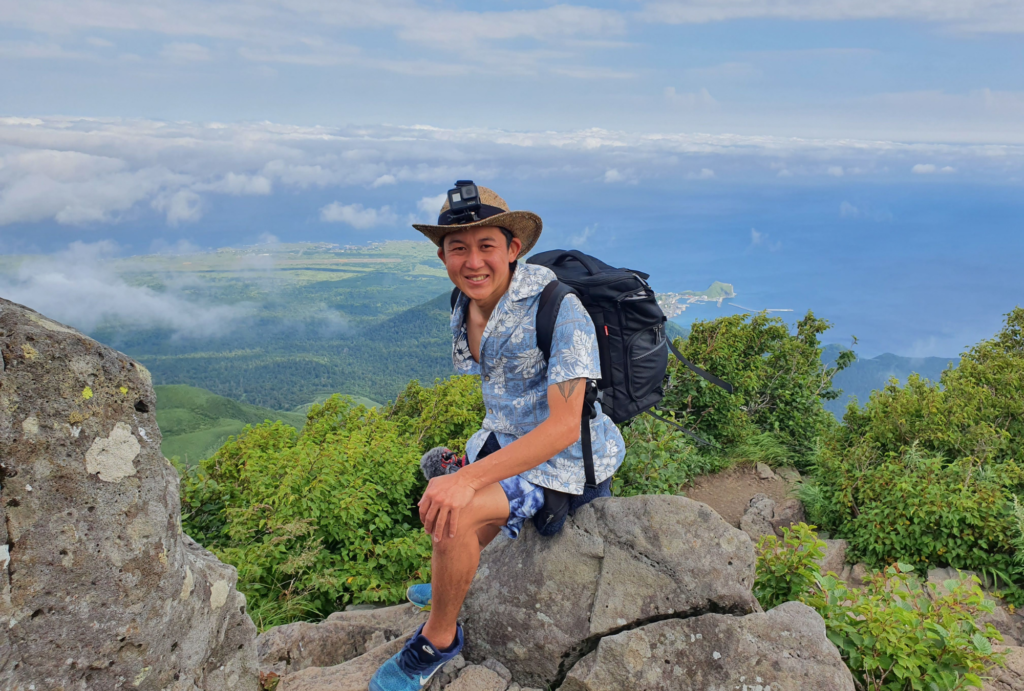
Name: Mt. Rishiri (利尻山)
Location: Hokkaido
Height: 1721m
Time: 10 Hours (6 hours up and 4 hours down)
Difficulty Rating: 5/5
Trail Head: Hokuroku Campground (see map below)
Mt. Rishri on Rishiri Island is not the easiest mountain to access in Japan. It definitely takes time, effort and money to get to Rishiri island from cities like Tokyo, Osaka or Sapporo. There is a small airport on Rishiri island, however most travellers tend to arrive on Rishiri island on the ferry from Wakkanai.
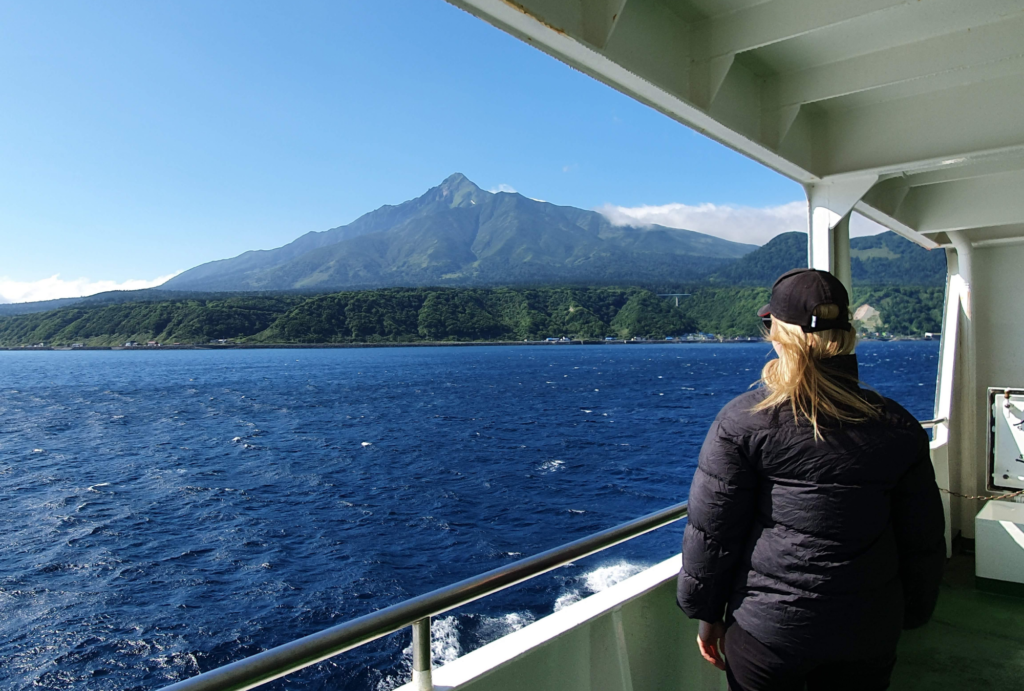
We were torn about whether to bring our camper van with us on the ferry to Rishiri island but in the end we decided against it due to the cost. It would have cost over ¥50,000 for a return trip to Rishiri and Rebun island with our van so we decided to just go as foot passengers from Wakkanai.
Ticket prices for the ferry vary depending on the season, click here to visit the Heartland ferry homepage for up-to-date schedule and ticket pricing information.
The issue with arriving in Rishiri Island as a foot passenger is that you have no transport once you step off the ferry. There are limited buses around the island, but if you are planning on hiking, your options are walking, taking a taxi or renting an overpriced car or motorbike.

If hiking the Oshidomari route up Mt. Rishiri and you have no transport, the best place to stay is “Yuni Campsite” for ¥550 per person on the outskirts of Oshidomari town where the ferry docks.
The reason we recommend this campsite is because it’s only a 10-15 minute walk from the ferry terminal. There is access to convenience stores, supermarkets and restaurants and opposite the campsite is an onsen which is the perfect place to go after completing your long hike!
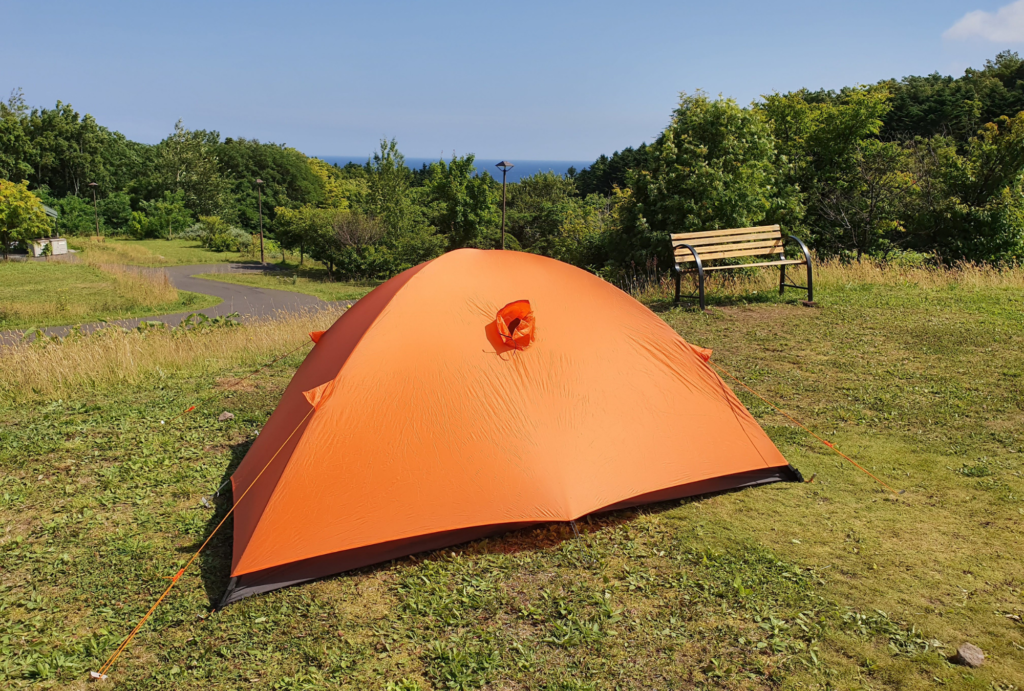
If you are not a fan of camping, there are affordable rental cottages at “Yuni Campsite” or there are other accommodation options such as ryokans or hotels available in Oshidomari town.
There is another campsite called “Hokuroku Campground” located at the Mt. Rishiri trailhead but if you don’t have any transport then the location of this campsite is quite inconvenient since it’s located around a 45-minute walk to the town where the shops and onsen are located.
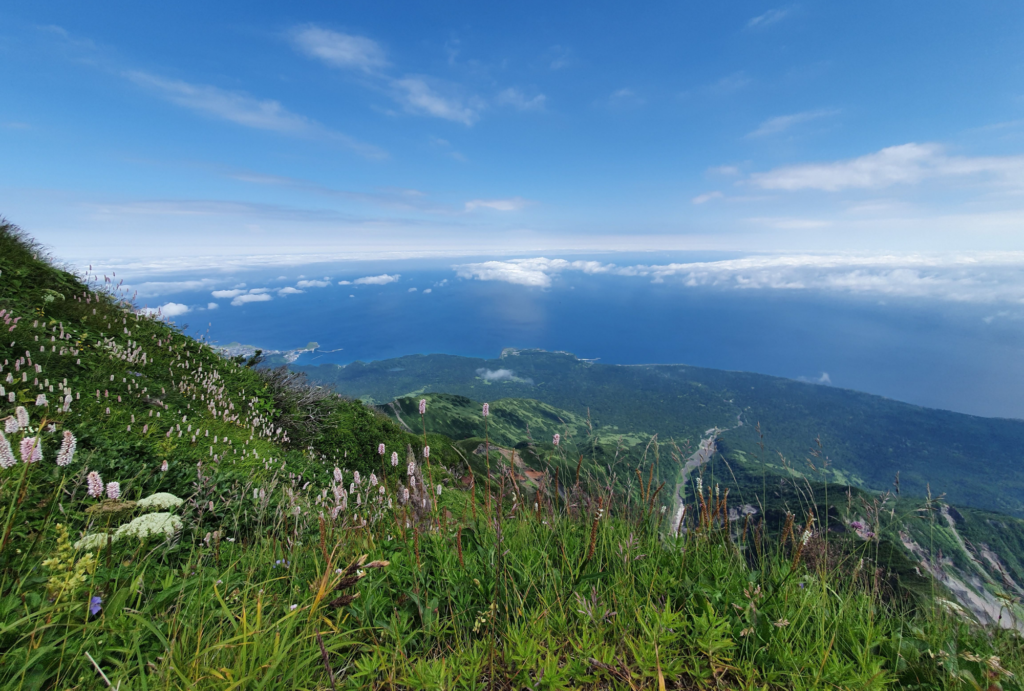
As mentioned above, the Mt. Rishiri trailhead is located at the “Hokuroku Campground”. There are toilets and vending machines located at the trailhead in addition to a bin where you can dispose of your portable toilet if you need to use it during your hike.
There is also a log book here where you can register your name before setting off on the hike.
If walking from “Yuni Campsite” to the trailhead, it will take around 45 minutes. It’s possible to hitchhike between “Yuni Campsite” and the trailhead since many cars are passing.
Another option is to take a 10-minute taxi to the trailhead from Oshidomari town.
The hike up Mt. Rishiri is one of the toughest hikes we have done in Japan. The reason for this is the huge elevation gain since the hike pretty much starts at sea level, especially if you are starting the hike from Oshidomari town. It’s best to start your hike as early as possible!
We woke up before sunrise and started walking from “Yuni Campground” towards the trailhead just as the sun was coming up. When we reached the trailhead, we met many other hikers who were also starting their hike at the same time.

Near the trailhead, you can find Kanrosen spring where you can fill up your water bottles. There are no foxes on Rishiri Island so the water is safe to drink unlike in other parts of Hokkaido where water can be contaminated with the disease echinococcosis which can be fatal for humans if left untreated. Near the spring, there are some picnic tables and a sheltered area.

The first hour of the hike starts out quite flat through a woodland before starting to gain momentum. Once the hike starts to steepen, you will reach the sixth station where there are some benches and a toilet room where portable toilets can be used. Between the sixth station and eighth station, it’s quite a tough hike through bushes without much of a view.
You then reach a clearing near the eight station where you get a wonderful view of Mt Rishiri and the top looks so close! It’s also possible to see the roof of the overnight hut in the distance. Even though the top looks so close, there is still quite a lot of hiking still to do.

After the eighth station, the hike starts to descend slightly towards the overnight hut and this part of the hike was quite overgrown when we did it.
There is another portable toilet room available behind the overnight hut and then the hike starts to ascend quite steeply and the terrain becomes quite rocky and unstable until you reach the top of the mountain. There are some ropes that you can hold onto while clambering over the rocks.

The space on the top of Mt Rishiri is quite limited and there is enough space for around 10 people. There is a shrine and some benches where you can enjoy eating your lunch while looking at the fabulous views. It’s also possible to spot some alpine flowers which Rishiri and Rebun island are known for.
We took the same route back down the mountain and were absolutely exhausted by the end of the hike.
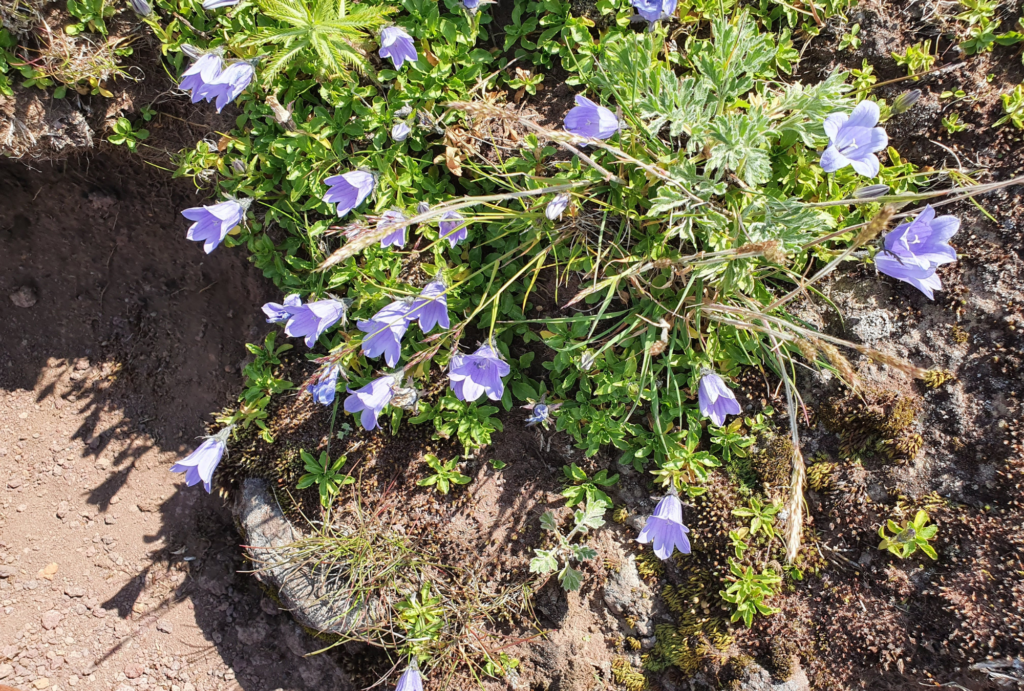
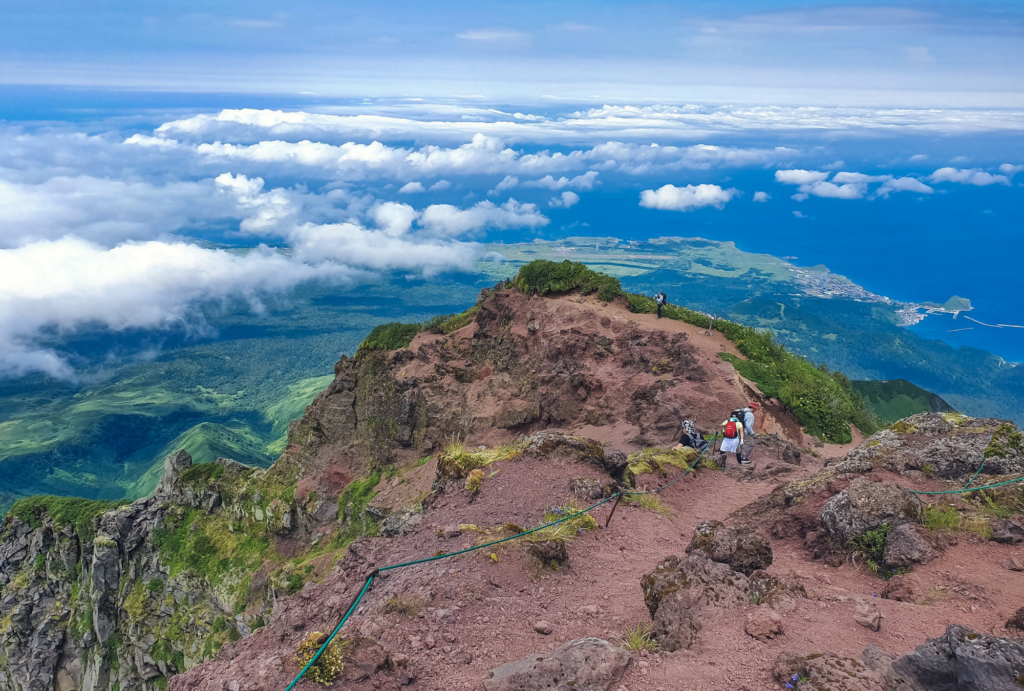
There is an overnight hut located around 45 minutes from the top of Mt. Rishiri which is free to use and has a portable toilet room.
There are no other facilities at the overnight hut, so you need to bring cooking equipment, water and sleeping bags if you plan to spend the night in the hut.

Unlike other mountains in Japan where the trail heads can be driven to and are located at a substantial height, Mt. Rishiri makes for a very long hike since you pretty much start at sea level. We met a local doing some maintenance on the trail during our hike and he told us that professional Japanese hikers who are training for climbing Mt. Everest, often hike Mt. Rishiri as part of their preparations.
We also met numerous locals during our time on Rishiri island who told us that the elevation gain of Mt. Rishiri is more than Mt. Fuji, the highest mountain in Japan! No wonder we were so knackered by the time we made it back to the campsite! The onsen near the campsite is a wonderful place to go and soak your tired legs after a long day of hiking!